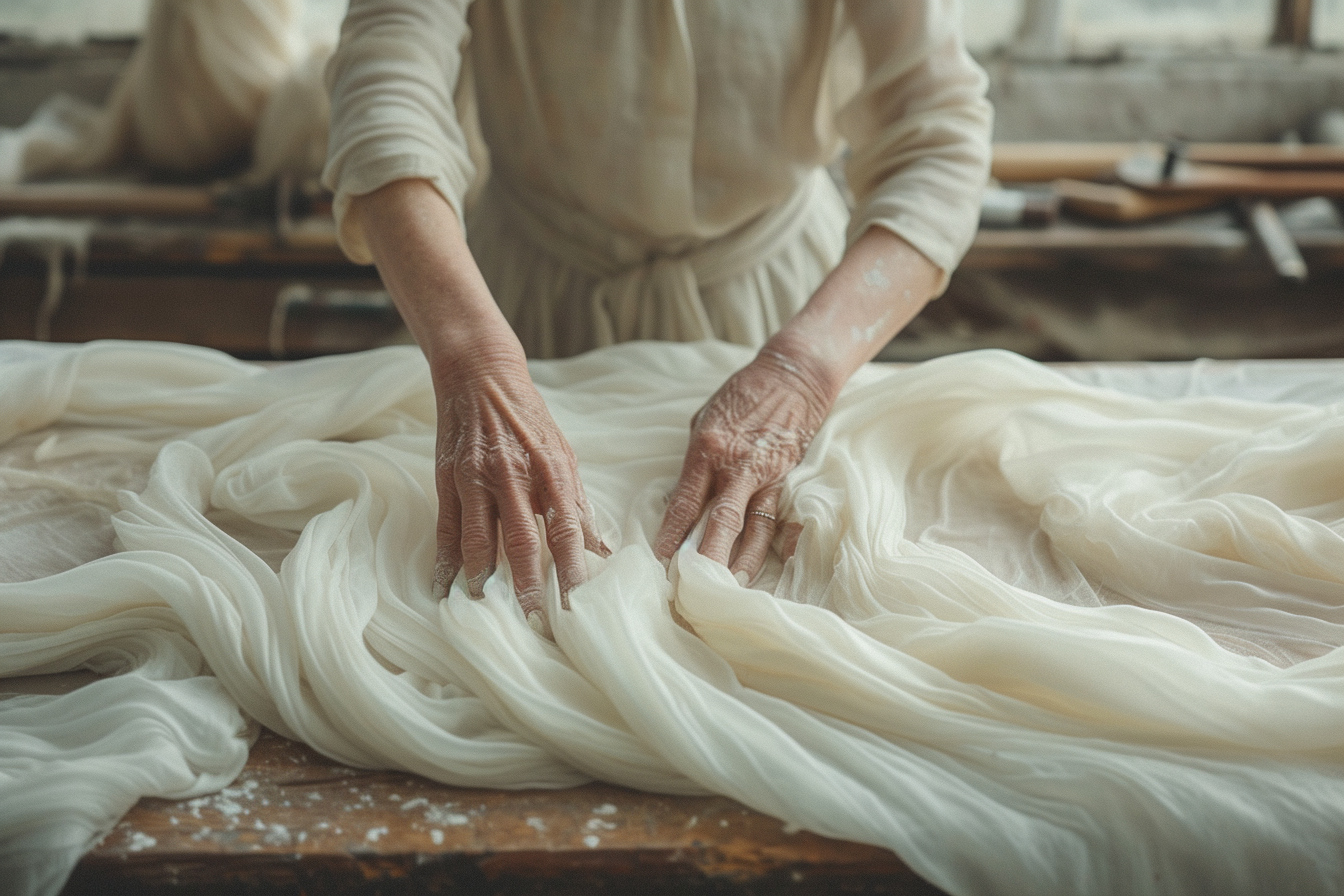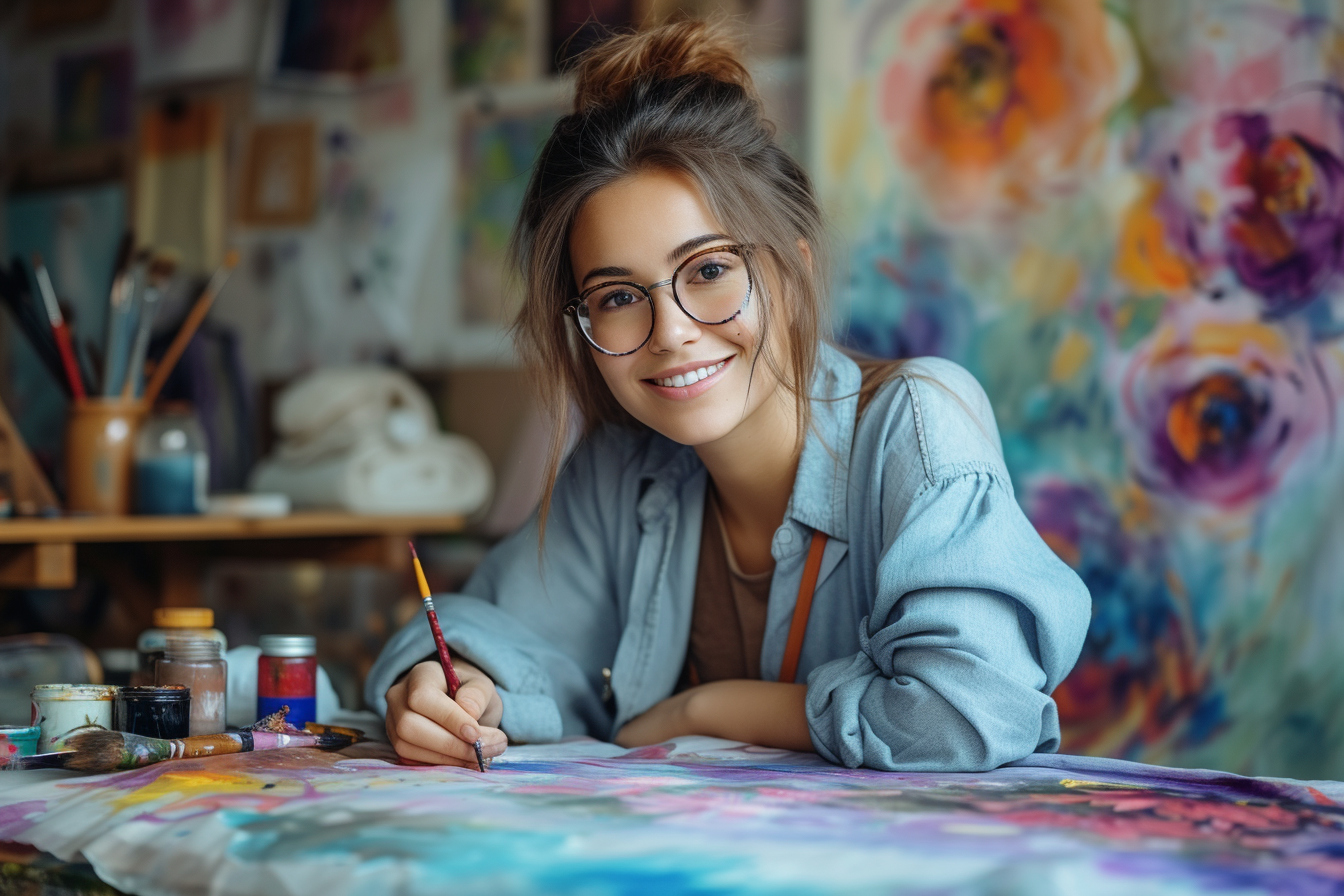The ancient art of silk painting creates exquisitely vibrant designs that transform fabric into beautiful works of art. Silk, with its smooth surface and luxurious sheen, serves as the perfect canvas for painters to express their creativity. The delicate interaction between dye and fabric is nothing short of a dance, with unique movements that bring artwork to life. In this comprehensive exploration, we delve into the essential silk painting techniques that enable artists to craft stunning fabric artistry. Mastering these methods opens the door to a fascinating world of color, texture, and design.
Preparing the silk for painting

Quality materials ensure a successful outcome, and silk painting is no exception. The process begins by selecting the right type of silk, which is typically a lightweight variety such as habotai or china silk. Before painting, the silk must be washed to remove any residues or sericin, a protein secreted by silkworms that can affect dye uptake.
Once the fabric is clean and dry, it is stretched on a frame, commonly referred to as a stretcher. The tension needs to be just right—too loose, and the dyes will not spread evenly, too tight, and the silk may tear. Artists use silk pins or a three-pronged tool to secure the material without causing damage.
Gutta and resist techniques
One of the main challenges in silk painting is controlling the flow of dye on the slick surface of the silk. The gutta or resist technique serves as a solution. Gutta, a substance similar to rubber, is applied to the fabric to create boundaries that dye cannot cross. This method allows artists to form precise lines and shapes, maintaining the integrity of their designs.
After sketching a design onto the silk, the gutta is carefully traced over the lines. Once the gutta dries, dyes can be applied within these boundaries. The resist method can also be achieved using water-based resists, which can be removed after setting, unlike permanent gutta.
Applying dyes and paints
Steaming and setting
The quality of the dyes or paints used in silk painting greatly impacts the final result. Artists often opt for dyes over paints to preserve the natural drape of the fabric. Silk dyes are applied using various brushes, sponges, or airbrushes, and the pigments penetrate the fibers for a colorfast finish. Once the silk piece is dyed, it must be steamed. Steaming is a crucial step that sets the colors, ensuring they are vibrant and permanent.
Serti technique
In French, “serti” means “enclosed” or “rimmed,” and in the realm of silk painting, it refers to a technique that creates enclosed areas of color. The serti technique involves applying gutta or a water-based resist to outline the design, similar to the gutta method previously mentioned. The beauty lies in the ability to treat each enclosed section as its mini canvas, playing with color and gradients to achieve depth and nuance.
Salt and alcohol textures
For artists seeking to add distinctive textures to their silk paintings, common household substances like salt and alcohol work miracles. When sprinkled onto wet dye, salt absorbs the moisture, creating starburst or snowflake patterns. The granular size of the salt will dictate the pattern’s size and the effect’s subtlety.
Rubbing alcohol, applied in drops or splashes, repels the dye, generating a halo or eyelet effect. Combining these materials can produce intricate and stunning textures, each one unique to the moment of creation.
Blending and shading
Silk’s seamless surface allows for beautiful blending and shading techniques. The color can be manipulated while wet to create soft transitions and shades. Contrasting colors can be encouraged to flow into each other by tilting the frame or using a dry brush to coax the dye along. The key lies in understanding the fluid nature of the medium and using it to the artist’s advantage.
Fixation process
Post-painting, the fixation process is pivotal in ensuring the longevity and brilliance of the artwork. Steaming is one method that sets the dye, making it colorfast and washable. Alternatively, chemical fixatives are an option, allowing for a fixative bath that can be simpler and less equipment-intensive. Each approach has its specificities, but both aim to keep the silk’s colors as bright and unchanging as the day they were applied.
Final thoughts on silk painting mastery
Painters who dedicate themselves to the art of silk painting become quick studies in patience, precision, and a deep understanding of their materials. The silk becomes a conduit for artistic expression, its delicate character demanding respect and a gentle hand. Mastery of the techniques highlighted in this article equips an artist with the means to create stunning silk masterpieces. Whether it is through meticulous resist techniques, creative textural elements, or seamless blending, the transformative process of painting on silk is equally rewarding and challenging.
Through practice, every stroke, splotch, and sprinkle on the silk brings artists closer to achieving their vision. The magic of silk painting lies not just in the finished piece, but also in the fascinating journey each artist takes to get there. With unlimited potential for innovation and experimentation, silk painting remains an ever-evolving art form that intrigues and captivates both creators and admirers alike.


Leave a Reply